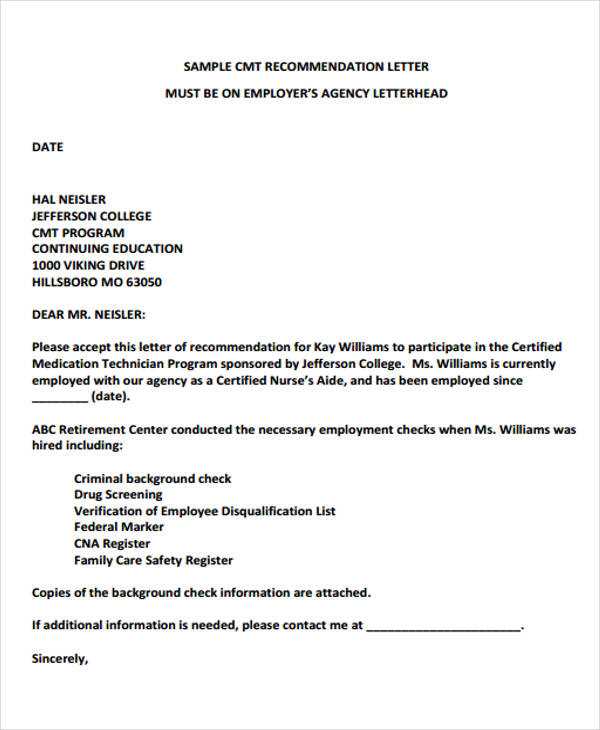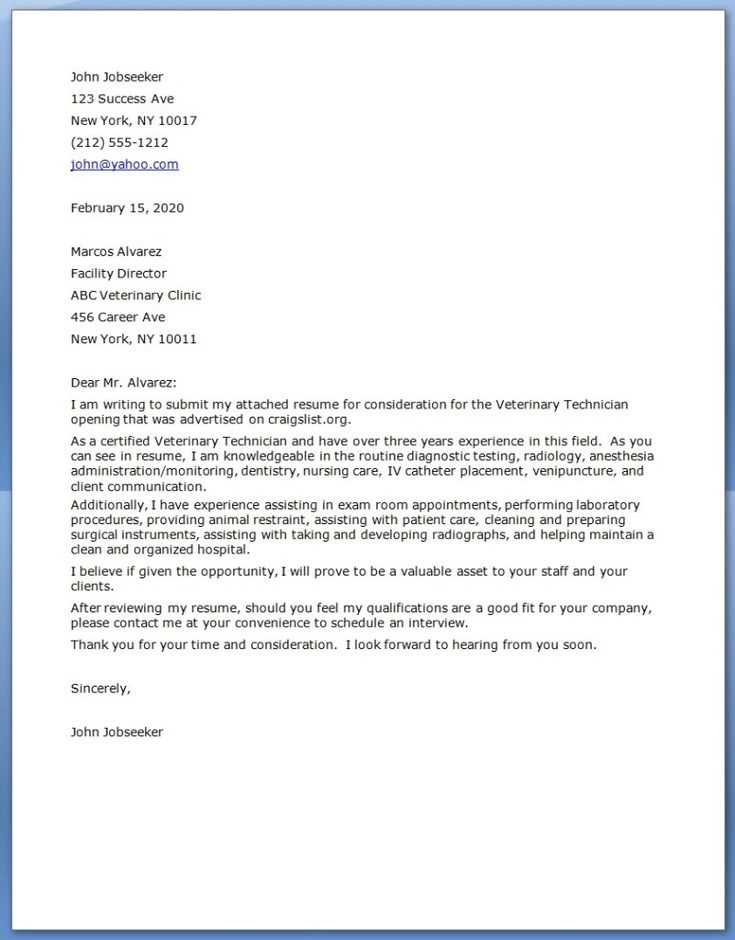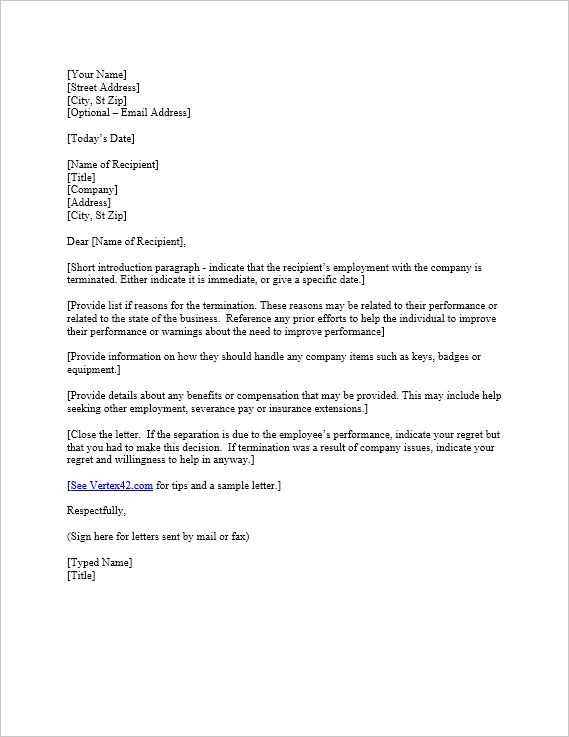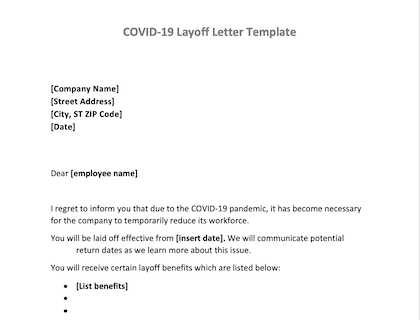Separation Letter Template for Employers and Employees

When an employment relationship comes to an end, it is important for both parties to have a clear and professional record of the termination. This official correspondence serves as a formal acknowledgment of the conclusion of the working arrangement and outlines the necessary details regarding the process. It helps ensure that both the employee and the organization are aligned on key aspects such as final duties and obligations.
Crafting this document requires careful attention to specific elements that convey the required information while maintaining professionalism. The message should be clear, concise, and structured to avoid confusion. Understanding the core components and format is essential to producing a document that reflects both legal requirements and organizational policies.
By adhering to the proper format, employers can avoid potential misunderstandings and ensure a smooth transition for both the employee and the company. This document plays a significant role in closing the chapter on the professional relationship in a respectful and legally sound manner. Accurate communication is key to preventing any future disputes or misinterpretations related to the departure process.
Understanding the Separation Letter
When a working relationship concludes, it is essential to provide a clear written record that officially acknowledges the end of the collaboration. This document serves as both a formal communication and a reference for both parties, outlining the terms and conditions of the termination. The goal is to ensure clarity and mutual understanding of the process, protecting both the individual and the organization.
Purpose of the Document
Such a written notice plays a crucial role in formalizing the conclusion of employment. It provides a structured way to communicate the necessary information while adhering to company policies and legal standards. Below are the key reasons for creating such a document:
- Clarifies the official end date of the professional relationship.
- Summarizes any remaining responsibilities or obligations.
- Offers legal protection by documenting the termination process.
- Ensures transparency for both parties involved.
Key Components
The content of this document should be clear and concise, covering several critical details. These elements ensure that both the organization and the individual are aligned on the final steps. The following sections are typically included:
- Identification: Full names and positions of both parties involved.
- Termination Date: The exact date the relationship officially ends.
- Reason for Termination: A brief statement of why the employment is ending.
- Final Actions: Instructions on the last duties or processes required to finalize the separation.
- Signatures: Both parties should sign the document to confirm understanding.
Essential Components of the Document

To ensure clarity and completeness, it is important that the document contains all necessary information to avoid confusion and potential disputes. A well-structured notice serves as a comprehensive record that both parties can reference when needed. Each section plays a crucial role in making the communication transparent and effective.
Critical Sections
The following sections are essential to providing a full understanding of the final stages of employment:
- Identification Information: This includes the names, job titles, and contact information of both parties involved.
- End Date: A specific mention of the exact date when the working relationship concludes.
- Reason for Termination: A brief and clear explanation of why the employment has ended, ensuring transparency.
- Last Duties and Responsibilities: Any final tasks or obligations the employee must fulfill before departure.
- Agreement and Signatures: Both parties must sign the document to confirm their agreement with the terms outlined.
Additional Information
In some cases, extra details might be necessary depending on the nature of the departure. This may include benefits information, company property return instructions, or other specific terms tied to the separation. These additions help ensure that the document fully captures all relevant circumstances.
Timing for Issuing a Separation Notice
Choosing the right moment to issue a formal notification regarding the end of an employment relationship is critical. Issuing it too early or too late can cause confusion or create legal challenges. It is essential to strike a balance, ensuring that both the individual and the organization have ample time to prepare for the transition while meeting any legal requirements.
Ideal Timeframe
Generally, it is recommended that the document be provided well in advance of the final day of employment. The typical timeframes vary depending on the type of departure, but here are some general guidelines:
- For voluntary departures, providing notice at least two weeks before the end date is standard.
- For involuntary terminations, it’s crucial to follow any specific legal notice periods required by local labor laws.
- Providing notice in writing allows the employee to review the details and ask questions if necessary.
Legal and Company Considerations
It is essential to adhere to any specific timelines set by legal frameworks or company policies. Failing to meet these requirements can result in potential disputes or claims. Ensuring timely notification allows both parties to understand their rights and obligations and helps prevent misunderstandings during the departure process.
Steps for Drafting the Letter
Creating a formal document that marks the conclusion of a professional relationship involves several important steps. Each stage ensures that the final communication is clear, respectful, and legally sound. Following a structured approach helps prevent errors and ensures all necessary details are included.
1. Gather Essential Information

Before drafting, collect all relevant information, such as the full names of both parties, job titles, and the exact date of termination. This ensures that the document is accurate and tailored to the specific situation. Verify any contractual terms that may impact the content, such as notice periods or final obligations.
2. Begin with a Formal Introduction
Start by addressing both parties involved and stating the purpose of the document. Clearly mention the end date and any key reasons for the departure, being careful to keep the tone neutral and professional. Be concise while ensuring all necessary points are covered.
3. Outline Final Responsibilities
In this section, detail any final duties or actions that need to be taken by the individual or the company. This may include returning company property, fulfilling outstanding tasks, or preparing for the transition. Clarity here helps avoid misunderstandings.
4. Close with Confirmation and Signatures
End the document by offering space for signatures from both parties, confirming their understanding and agreement. This final step adds a level of formality and helps to protect both parties legally. Ensure that both individuals sign the document before the final day of employment.
Avoiding Common Errors in Letters
When drafting a formal document to end a professional relationship, it’s important to avoid common pitfalls that could lead to misunderstandings or legal complications. Ensuring clarity, accuracy, and professionalism is key to maintaining a respectful and effective communication process. By being mindful of certain mistakes, you can create a document that serves its purpose without issues.
| Common Mistake | How to Avoid |
|---|---|
| Vague language or unclear terms | Use precise and specific wording to describe the circumstances, responsibilities, and dates. |
| Missing essential details | Ensure all required information is included, such as the end date, obligations, and contact information. |
| Inconsistent tone | Maintain a professional and neutral tone throughout the document to avoid any misunderstandings. |
| Failure to address legal requirements | Double-check the legal obligations in your region to ensure compliance with local labor laws. |
| Unclear consequences or actions | Clearly outline any follow-up actions or potential consequences to avoid ambiguity. |
By paying attention to these common errors, you ensure that the document is both professional and effective, protecting the interests of both parties involved.
Legal Aspects of Separation Letters
When concluding a professional relationship, it is crucial to understand the legal implications that accompany the formal communication of such an event. Ensuring compliance with local laws and regulations is essential to avoid potential disputes or litigation. This section explores the key legal considerations to keep in mind when drafting such a document.
1. Compliance with Employment Contracts
Before drafting the formal notice, review the terms of the employment agreement to ensure that all conditions are met, such as notice periods, severance pay, and any additional clauses related to termination. Failure to comply with these terms can result in legal consequences for both parties, including breach of contract claims.
2. Employment Laws and Regulations

Depending on the jurisdiction, there may be specific labor laws that govern how and when termination should be communicated. Be sure to research and adhere to these laws, particularly when it comes to the rights of employees, final pay, and benefits that must be provided upon ending the employment relationship. This is especially important in countries with strict labor protection laws.
By understanding these legal aspects, both parties can ensure that the process is carried out smoothly and in full compliance with applicable laws.